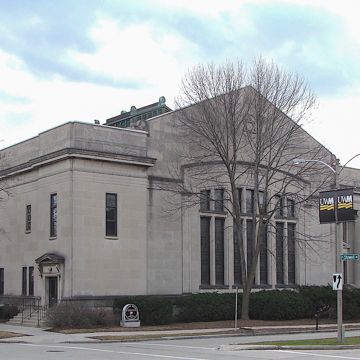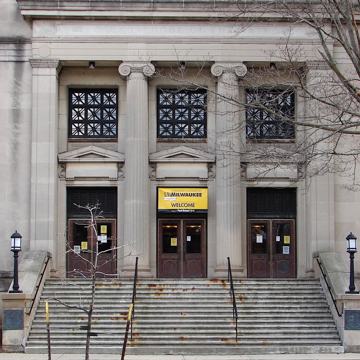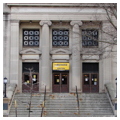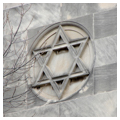In 1922, having outgrown a downtown synagogue, Emanu-El (established 1869) constructed this building on suburban Kenwood Boulevard. Five years later, B’ne Jeshurun (established 1858) merged with Emanu-El to form Milwaukee’s oldest and largest Jewish temple. Members worshiped in a severe but dignified building, designed in an unadorned classical style. Only the cornice and columns at the entrance and the pediments over the Stowell Avenue side entrances punctuate the flat limestone walls. The facade’s focal point is a generous segmental-arched stained glass window that lights the domed auditorium. An incised Star of David is in the gable above the window.
The design solves the problem that faced many early-twentieth-century Jewish congregations when choosing an architectural style. Jews did not have an architectural tradition in Europe upon which to draw. Christian ecclesiastical architecture seemed inappropriate, as did designs based on Islamic and Byzantine architectural models, sometimes seen as Jewish styles. So Emanu-El, a Reform congregation, turned to secular Beaux-Arts classical forms for their new building, much as Christian Scientists did for their new churches. The University of Wisconsin acquired the building and converted it into a performing arts center in 2000, a branch of the university’s Peck School for the Arts.







